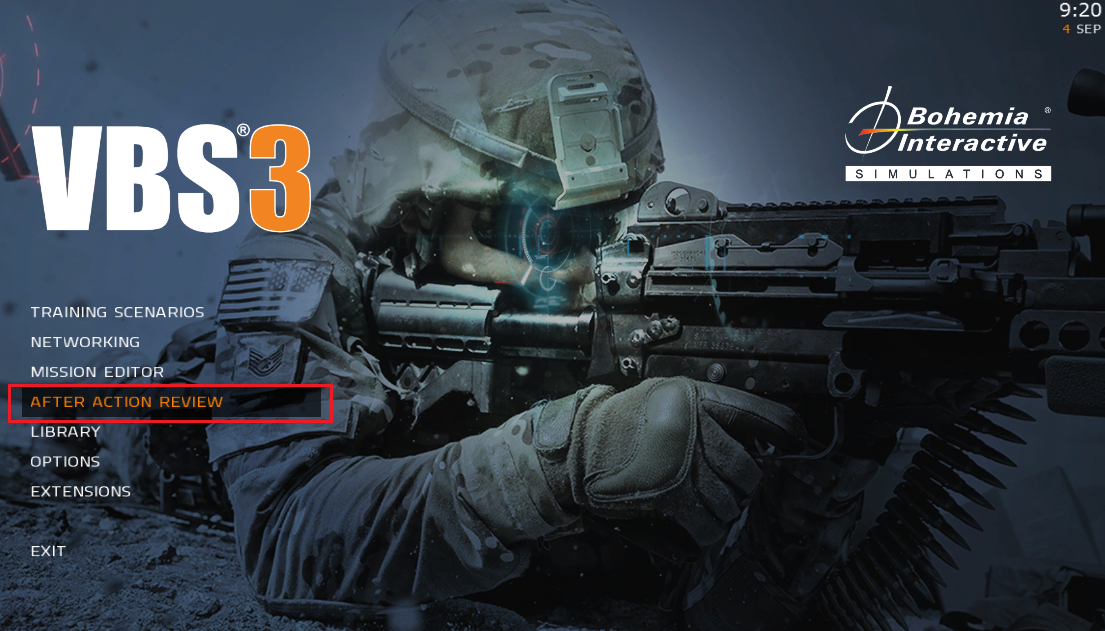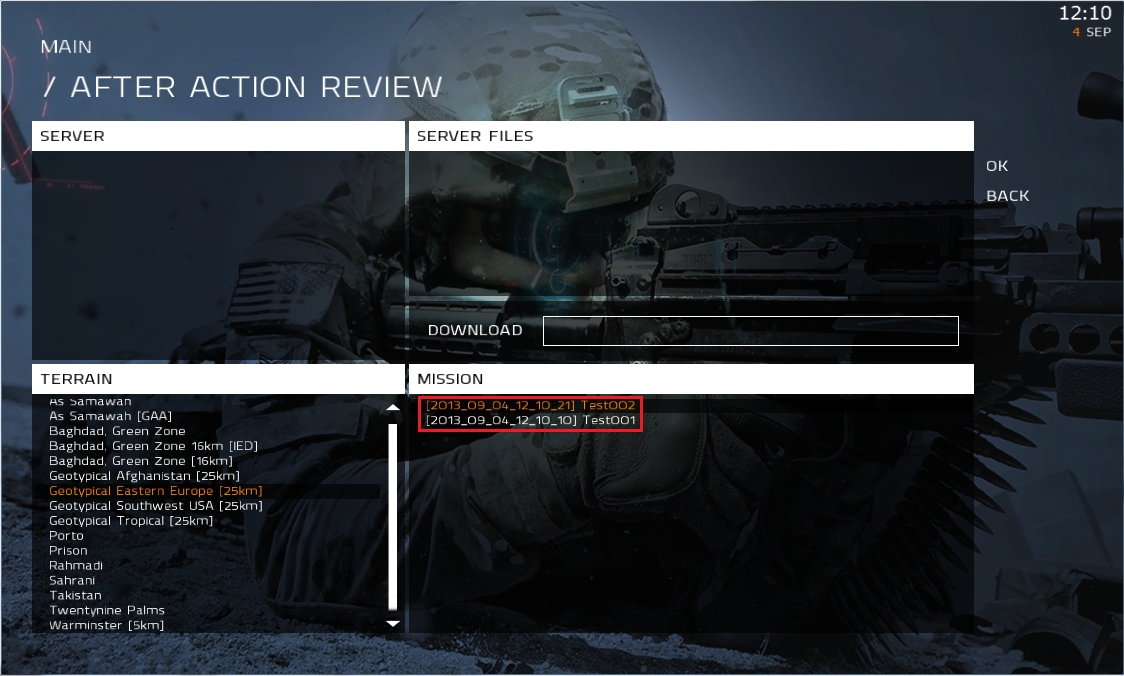After Action Review (AAR)
VBS3Strike is seamlessly integrated with the VBS3 AAR functionality. The standalone mode of VBS3Strike is able to record and play-back after action reviews.
The VBS3Strike captures all the VBS3Strike ordinance detonations and injects them into the VBS3 AAR at the correct timings.
The general rule when operating the AAR in VBS3Strike is to:
- Start AAR Recording in VBS3Strike
- Load and playback though VBS3

∆ Image 12a: AAR Recording Menu
- The Save AAR window will appear with its recording timer

∆ Image 12b: Start AAR Recording view
- Go to AAR → Save Recorded AAR to save the AAR or if above ‘AAR Recording’ window is closed.
- Load and playback though VBS3.

∆ Image 12c: VBS3 Home Screen

∆ Image 12d: After Action Review screen
VBS3Strike saves a separate VBS3Strike AAR file which stores additional information to the standard VBS3 AAR file. For this reason, recording and saving of the AAR must be controlled through VBS3Strike, so that it can manage the synchronization between VBS3Strike and VBS3 while recording.
AAR can now be started from VBS3 RTE. If it is saved from RTE, it prompts the user to find the VBS3 AAR file. The AAR menu items are automatically updated based on the recording status of an AAR. AAR has the ability to display the projectile path and to jump to particular detonation time using the 'Fast Forward to Selected Detonation' button in the Projectile Analysis table.
VBS3Strike will adjust the user interface to disable all menus which aren't
used by the VBS3Strike AAR. It will re-enable these menus when VBS3Strike is
connected to a live simulation scenario.
